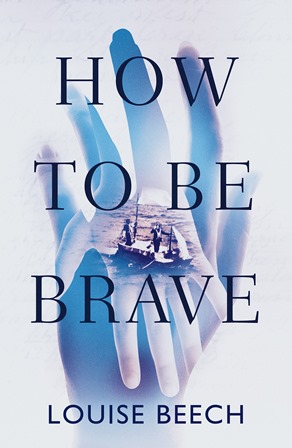Author Louise Beech shares her advice on using real-life experiences to inform your fiction, and how it can work as a kind of therapy.

“It’s under the mask of fiction that you can tell the truth.” – Gao Xingjian.
One of the hardest and easiest things I’ve ever done is write my novel, How to be Brave. I’d needed six years of breathing space in order to look back - very intensely - at one of the most difficult times in my life. Then the past prodded me vigorously on the shoulder until I started, with the simplest line - 'There were two of us that night.' And I returned to it.
In 2007, just after the most severe UK floods, my seven-year-old daughter Katy was diagnosed with Type 1 Diabetes. We lost our home, car and belongings to the water, then our daughter’s health, and I gave up my job in travel to care for her - all in the space of a month. Life became a dizzy roundabout of blood tests and injections and hospital visits and distressed child.
I turned to writing, as I often had before in life; to my refuge, the blank screen, where I added words until they became stories. At a rickety borrowed desk - in a house that wasn’t home - I described the rain, explored my childhood, and created fiction. But I couldn’t write about the evening Katy’s life changed forever.
My short stories began being accepted by UK magazines and winning competitions. Writing became more than just therapy, escape, private. So I started a novel, inspired by the floods, and it hooked me an agent. For two years she tried to sell two of my novels without success. Editors said I wasn’t the new *insert popular writer’s name*, that I wasn’t a particular genre, that they weren’t sure where I fit.
During this time my daughter Katy went through a delayed reaction to the diabetes and refused her life-saving insulin injections. The only thing that persuaded her was storytelling - in exchange for fiction she accepted the needle. When fiction wasn’t enough, we went in search of truth and I told her the incredible story of my grandad, Colin Armitage, a Merchant Seaman who survived fifty days lost at sea during the war. His heroism inspired my daughter’s.
I wrote a short story about the experience. It was shortlisted for the Bridport Prize; and it haunted me. It wanted to be more. Bigger. It whispered it’s time now to me.
So in 2013 I finally started, How to be Brave, a novel that my subconscious had been writing for a long time. This was a book paying tribute to my grandad’s bravery and also to my daughter’s, but it required my courage to do so. There were days when I couldn’t write a word. When I had to face the night we took a semi-conscious Katy to the hospital. When I closed my eyes to relive something I’d closed the pages on right after it happened. All the sadness I’d buried now engulfed me. So I made it into a story.
There’s safety in fictionalising painful truth and so I created a mum - Natalie - and a daughter - Rose - who were going through a Type 1 Diabetes diagnosis, and to cope they shared the story of Grandad Colin. I stuck closely with the factual when writing about my grandad’s struggles on the lifeboat in the middle of the Atlantic Ocean. But I wanted to make it even harder for Rose and Natalie, so her husband - unlike mine - was away in Afghanistan when tragedy struck. Natalie had no siblings, no other children for support, as I’d had. I was cruel to my characters because I loved them and wanted their journey to be worthwhile.
I said earlier that writing How to be Brave was both the hardest and the easiest thing I’ve done. If writing is easy then what’s the point? Challenge brings out the best in us. But of course, if writing comes naturally then it will inevitably be easy - and therefore joyful. Because even though I experienced much pain recreating those dark days, there’s no other place I’d rather be than in front of that empty page.
Facing the thing that scares us most as writers frees us. If we tackle that tough topic, we can tackle anything. When a nurse did a blood test and told us Katy had diabetes I cried. Then I didn’t. I wanted to ‘be strong’ for my child. I stored those tears like coins saved for a rainy day. I was able to finally release them in a torrent with every typed word, every sentence, every paragraph. In How to be Brave storytelling rescues young Rose. I think it has the power to save every one of us, whether we’re telling the tale or listening to it.
At the beginning of this year Karen Sullivan of Orenda Books took a chance on How to be Brave, and I got a book deal. I didn’t have to emulate anyone else or justify what genre I was or explain which bookshelf I belonged on. When I finally wrote the book I was supposed to, I found my true niche.
How to be Brave is published by Orenda Books, and available on Kindle 30th July, and in paperback 17th September, from Amazon, Waterstones, Foyles and Blackwell’s.
Comments